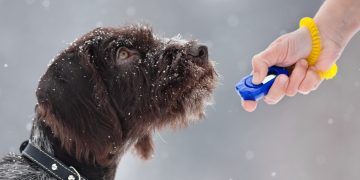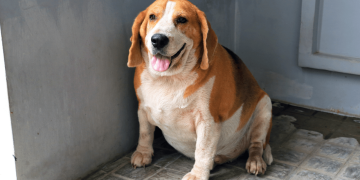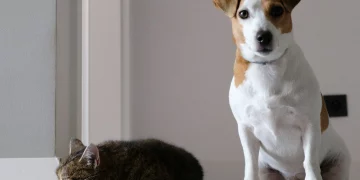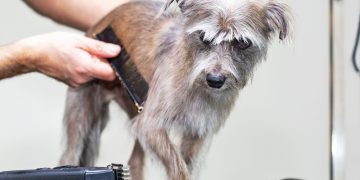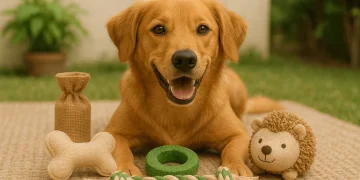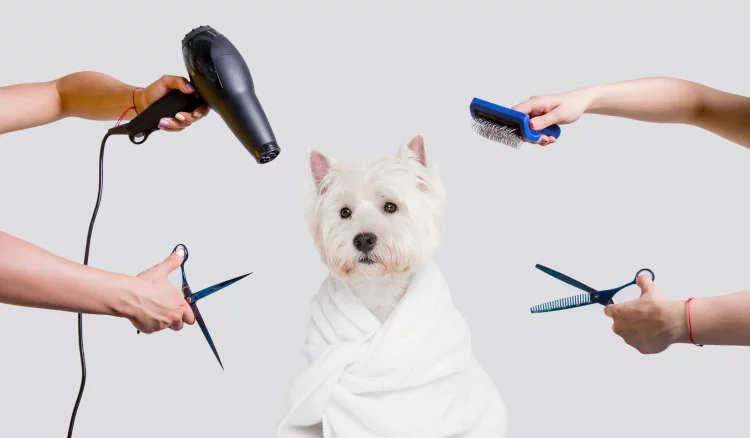As a first-time pet owner, one of the most important responsibilities you’ll take on is grooming. Grooming not only helps to keep your pet clean, but it also plays a vital role in maintaining their overall health and wellbeing. Proper grooming allows you to check for skin problems, fleas, and other health issues while providing a bonding experience between you and your pet. This comprehensive guide will take you through the basic grooming techniques, step by step, to ensure your pet is both clean and happy.
Why Grooming Is Important
Grooming is not just about aesthetics – it’s essential for the overall health of your pet. Here’s why regular grooming is so important:
- Health Check: Grooming allows you to inspect your pet’s coat and skin for signs of health issues, such as parasites, rashes, lumps, or infections.
- Prevention of Matting: Regular brushing prevents tangles and mats in your pet’s fur, which can be uncomfortable and painful.
- Control Shedding: Brushing your pet helps manage shedding, which can reduce the amount of hair on your furniture and floors.
- Ear and Eye Care: Grooming also involves cleaning your pet’s ears and eyes, helping to prevent infections and discomfort.
- Nail Trimming: Keeping your pet’s nails trimmed is essential to prevent overgrowth, which can lead to painful walking or damage to furniture.
Getting Started: Basic Grooming Tools
Before you begin grooming your pet, you’ll need the right tools. The exact tools you need may depend on your pet’s breed, coat type, and size, but here are the most common grooming tools every pet owner should have:
- Brush: A good-quality brush is essential for keeping your pet’s coat smooth and tangle-free. There are various types of brushes, such as pin brushes, slicker brushes, and bristle brushes. For long-haired pets, a pin brush or slicker brush is often the best choice, while short-haired pets can use a bristle brush.
- Comb: A comb is useful for removing tangles and mats, especially in areas where the brush might not reach, such as behind the ears or under the legs.
- Nail Clippers or Trimmers: Regular nail trimming is an essential part of grooming. Choose a clipper that suits the size and breed of your pet.
- Shampoo and Conditioner: Pet-specific shampoos and conditioners help to keep your pet clean and free from skin irritations.
- Ear Cleaner: Pet ear cleaners help to clean your pet’s ears and prevent infections caused by wax buildup.
- Towel: A towel is necessary to dry your pet after a bath, as pets don’t always tolerate blow-dryers.
- Cotton Balls or Pads: These are useful for wiping around your pet’s eyes and ears to remove dirt and discharge.
Step-by-Step Guide to Basic Pet Grooming
Step 1: Brushing Your Pet’s Coat
Brushing your pet’s coat is the first step in grooming, and it’s something you can do on a regular basis. Whether your pet has short, medium, or long fur, brushing helps remove dirt, debris, and loose hair while also preventing mats and tangles. It also helps to stimulate blood circulation, promoting healthy skin.
Instructions:
- Choose the right brush: Select the appropriate brush for your pet’s coat. For long-haired pets, a pin brush or slicker brush is ideal for detangling, while short-haired pets can benefit from a bristle brush or rubber grooming mitt.
- Brush gently: Always start brushing gently at the tips of the hair to avoid pulling or irritating your pet’s skin. Work your way up to the roots, following the natural direction of the hair growth.
- Brush in sections: Divide your pet’s coat into sections and brush each section thoroughly. Pay special attention to areas that are prone to matting, such as the underbelly, behind the ears, and around the legs.
- Remove tangles and mats: If you encounter tangles or mats, gently use a comb to work them out. If mats are too tight, use a mat splitter or a special detangling tool to remove them. Avoid pulling too hard, as it can cause discomfort.
Step 2: Bathing Your Pet
Bathing is an essential part of grooming, but it’s important not to overdo it. Too many baths can strip the natural oils from your pet’s skin, leading to dryness and irritation. Depending on your pet’s activity level and health, you should bathe them every 4-6 weeks or as needed.
Instructions:
- Prepare the space: Make sure you have everything you need before starting, including shampoo, conditioner, towels, and your pet’s grooming tools.
- Use lukewarm water: Ensure the water temperature is comfortable for your pet. Too hot or too cold water can be uncomfortable and stressful for them.
- Wet your pet’s coat: Gently wet your pet’s coat with a hand-held shower or a cup of water. Be careful not to get water in your pet’s ears or eyes.
- Apply shampoo: Use a pet-specific shampoo that matches your pet’s skin type (sensitive, dry, or oily). Massage the shampoo into your pet’s fur and skin, avoiding the eyes and face. If your pet has long hair, you may need to apply conditioner to prevent tangling.
- Rinse thoroughly: Make sure to rinse all the shampoo and conditioner out of your pet’s coat to avoid any residue, which can irritate their skin.
- Dry your pet: Use a towel to gently pat your pet dry. For pets with long fur, you may need to use a blow dryer on a low, cool setting to prevent mats and tangles. Always make sure your pet is comfortable during the drying process.

Step 3: Nail Trimming
Trimming your pet’s nails is crucial for their comfort and health. Overgrown nails can cause pain, affect your pet’s posture, and damage your floors and furniture. Regular trimming is necessary to keep nails at a manageable length.
Instructions:
- Prepare your pet: Ensure your pet is calm and comfortable before starting. You may want to use treats or gentle praise to make the experience more positive.
- Examine the nails: Look for the “quick” (the pink area inside the nail that contains blood vessels). Avoid cutting into the quick, as it can be painful and cause bleeding. If your pet has dark nails, trim small amounts at a time to avoid cutting too much.
- Use the right clippers: For smaller pets, use scissor-style clippers or guillotine-style trimmers. For larger pets, you may want to use heavy-duty clippers designed for thick nails.
- Trim carefully: Trim the nails in small increments, cutting just a little bit at a time. If you accidentally cut the quick, use styptic powder to stop the bleeding.
- Smooth the edges: After trimming, use a nail file to smooth the edges of your pet’s nails and avoid any sharp points that may cause injury.
Step 4: Cleaning Your Pet’s Ears
Ear cleaning is an important part of grooming that is often overlooked. Pets, especially those with floppy ears, are prone to ear infections caused by dirt, wax, and moisture buildup.
Instructions:
- Examine the ears: Check your pet’s ears for any signs of redness, odor, discharge, or excessive wax. If you notice any of these, consult your vet for advice before proceeding with cleaning.
- Use a pet-specific ear cleaner: Place a few drops of ear cleaner into your pet’s ear canal and gently massage the base of the ear to distribute the cleaner. Use a cotton ball or pad to wipe away any dirt or wax.
- Avoid inserting anything into the ear canal: Never insert cotton swabs into your pet’s ear canal, as this can push debris further inside and potentially cause damage.
- Repeat as needed: Clean your pet’s ears every few weeks, or more often if they are prone to ear infections.
Step 5: Cleaning Your Pet’s Eyes
Your pet’s eyes should also be regularly cleaned to avoid irritation or infection. Tears, dirt, and discharge can accumulate around the eyes, especially in certain breeds.
Instructions:
- Inspect the eyes: Look for any redness, discharge, or cloudiness. If you notice any abnormalities, consult your vet for further advice.
- Wipe gently: Use a soft, dampened cotton ball or pad to gently wipe away any dirt or discharge from the corners of your pet’s eyes. Be careful not to touch the eyeball.
- Use an eye cleaner if necessary: If your pet has persistent eye discharge, you can use a pet-safe eye cleaner to help clean the area around the eyes. Follow the instructions on the product.
Additional Grooming Tips
- Start Early: Introduce your pet to grooming as early as possible. Puppies and kittens are easier to train to enjoy grooming than adult pets who may have had negative experiences in the past.
- Use Positive Reinforcement: Always reward your pet with praise, treats, or affection after grooming sessions to help them associate grooming with positive experiences.
- Regular Grooming Sessions: Depending on your pet’s breed and coat type, regular grooming may be needed. Long-haired pets may require daily grooming, while short-haired pets may only need grooming every couple of weeks.
- Visit the Groomer: While regular at-home grooming is essential, it’s also a good idea to take your pet to a professional groomer for a more thorough cleaning, especially for long-haired breeds or when you’re unsure of how to properly groom.
Conclusion
Grooming your pet doesn’t have to be an overwhelming task. With the right tools, techniques, and patience, you can easily learn how to groom your pet and ensure they stay clean and healthy. Regular grooming not only helps maintain your pet’s appearance but also contributes to their overall wellbeing. By following this beginner’s guide, you’ll have the knowledge and confidence to keep your pet looking and feeling their best.





